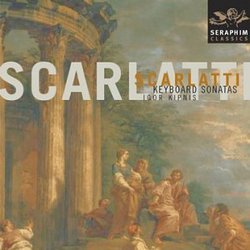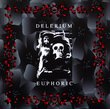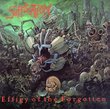| All Artists: Scarlatti, Kipnis Title: Keyboard Sonatas Members Wishing: 0 Total Copies: 0 Label: EMI Classics Release Date: 2/27/2001 Genre: Classical Styles: Chamber Music, Forms & Genres, Sonatas, Historical Periods, Baroque (c.1600-1750), Classical (c.1770-1830) Number of Discs: 1 SwapaCD Credits: 1 UPCs: 724357428125, 724357428156 |
Search - Scarlatti, Kipnis :: Keyboard Sonatas
 | Scarlatti, Kipnis Keyboard Sonatas Genre: Classical
Although this disc is recycled goods (originally on LPs, then on an EMI CD reissue), it shouldn't be overlooked. The sound quality of Kipnis's instruments (two harpsichords and a clavichord) is still sparkling and clear, e... more » |
Larger Image |
CD DetailsSynopsis
Amazon.com Although this disc is recycled goods (originally on LPs, then on an EMI CD reissue), it shouldn't be overlooked. The sound quality of Kipnis's instruments (two harpsichords and a clavichord) is still sparkling and clear, especially in this new remastering. In contents and performance, it's the ideal single disc of Scarlatti. The material is selected to show the wide range of Scarlatti's expression, from the lyrical quality of K. 513 to the fury of K. 444. Kipnis keeps most of Scarlatti's pairs of Sonatas together. He plays all the repeats in the scores, which is vital to keeping the music from sounding like a batch of miniatures, and he adds imaginative embellishments to his repeats. Best of all, Kipnis's performances reflect the nature of the music ideally, even to the extent of using the very soft-voiced clavichord for three Sonatas he feels are suited to the instrument. The low price of the disc makes it affordable enough to give to your friends who aren't already Scarlatti lovers. This will win them over! --Leslie Gerber Similar CDs
|
CD ReviewsGreat Scarlatti Playing 09/21/2001 (5 out of 5 stars) "I'll quickly dismiss the only reservation I have about this recording, and it is a small one indeed. The recordings here obviously come from two different sessions. While one of those sessions produced brilliant and airy sonics, especially in the new digital remastering, the other offers a drier sound picture, and the difference is fairly obvious. Still, there is so much to enjoy here, I don't wish to belabor the issue.So then, down to the playing. Igor Kipnis was, for my money, the best harpichordist of his generation, and his playing hasn't been superseded by more recent artists. Here, his playing is wonderfully crisp and characterful in the faster sonatas such as the well-known Sonata in G, K. 337, and he catches Scarlatti's lyrical moods with equal success, infusing the gorgeous Sonata in C minor, K. 11, with genuine pathos. Then Kipnis has a truly virtuoso turn in the dramatic Sonata in D minor-major, K. 444.Happily, the clavichord that Kipnis plays is ideally recorded, though the recording comes from way back in the 70s. (The clavichord seemed to offer special recording challenges throughout the stereo era. I remember the liner notes to one recording I owned in which the clavichordist said he had recorded his instrument in a well-isolated bathroom in order to catch its diminutive voice!) And the clavichord is the perfect medium for the three sonatas K. 87, K. 322, and K. 323.All in all, then, just about the ideal Scarlatti collection, at a very nice price." Kipnis stands out from the crowd Eloi | Ely, NV USA | 04/04/2005 (5 out of 5 stars) "Kipnis belongs to the "Lost Generation" of revival harpsichordists along with Valenti, Hamilton, Sgrizzi, Puyana and others. They were all keen to continue the harpsichord revival of Landowska and Kirkpatrick in sometimes oddly-miked performances on their revival-style instruments with all the bells and whistles--foot-couplers, "lute" stops, and the like. Their recordings are hard to find nowadays, because they failed the authenticity test. OK, let the historians duke it out over whether there was ever a Spanish harpsichord with the 16' stop that Kipnis uses sparingly on this recording. What you get here are performances that exploit rhythm and phrasing much more than the idiosyncrasies of the revival harpsichord. Take K 322, for instance: I had always thought of this as a transcribed dance track, and that's what you hear in performances by Horowitz, Lewin, Szokelay et al. But Kipnis, who plays this work on the clavichord, has a different idea, much freer. Another clavichord gem (of 3) is K 87. One of the most obvious ways Kipnis stands out from even the rest of the revival players is his eagerness to decorate the repeats in what he thought was authentic practice of the 18th century. Was it really so? Heck, we'll never know, but his repeats go beyond a few added ornaments to substantial additions. He regularly fills in intervals with scale passages, and he generally is consistent in style, so there's a kind of thematic unity to his ornamentation for any given piece. Sometimes I like it (K 444 is great), sometimes not (K 146). But it is always within the rhythmic framework. If you want to add an entirely new take on your Scarlatti experience, I recommend this well-recorded bargain." Fabulous! Brian K. Musgrave | Fresno, Ca. USA | 03/17/2007 (5 out of 5 stars) "Truly a "must-have" item for Boroque music lovers...What Bach was for the fugues, Scarlatti was to the Sonatas...great item, professionally shipped and transaction was smooth and with expedience..would highly recommend seller...Thank you !"
|

 Track Listings (15) - Disc #1
Track Listings (15) - Disc #1


